Paracetamol (acetaminophen) for patent ductus arteriosus in preterm or low birth weight infants
- PMID: 36519620
- PMCID: PMC12045062
- DOI: 10.1002/14651858.CD010061.pub5
Paracetamol (acetaminophen) for patent ductus arteriosus in preterm or low birth weight infants
Abstract
Background: The different management strategies for patent ductus arteriosus (PDA) in preterm infants are expectant management, surgery, or medical treatment with non-selective cyclo-oxygenase inhibitors. Randomized controlled trials (RCTs) have suggested that paracetamol may be an effective and safe agent for the closure of a PDA.
Objectives: To determine the efficacy and safety of paracetamol as monotherapy or as part of combination therapy via any route of administration, compared with placebo, no intervention, or another prostaglandin inhibitor, for prophylaxis or treatment of an echocardiographically-diagnosed PDA in preterm or low birth weight infants.
Search methods: We searched CENTRAL, MEDLINE, Embase, and three trials registers on 13 October 2021, and one other database on 1 March 2022. We also checked references and contacted study authors to identify additional studies.
Selection criteria: We included RCTs and quasi-RCTs in which paracetamol (single-agent or combination therapy) was compared to no intervention, placebo, or other agents used for closure of PDA, irrespective of dose, duration, and mode of administration in preterm infants. Two independent authors reviewed the search results and made a final selection of potentially eligible articles through discussion.
Data collection and analysis: We performed data collection and analyses in accordance with the methods of Cochrane Neonatal. We used the GRADE approach to assess the certainty of evidence for the following outcomes: failure of ductal closure after the first course of treatment; all-cause mortality during initial hospital stay; and necrotizing enterocolitis (NEC).
Main results: For this update, we included 27 studies enrolling 2278 infants. We considered the overall risk of bias in the 27 studies to vary from low to unclear. We identified 24 ongoing studies. Paracetamol versus ibuprofen There was probably little to no difference between paracetamol and ibuprofen for failure of ductal closure after the first course (risk ratio (RR) 1.02, 95% confidence interval (CI) 0.88 to 1.18; 18 studies, 1535 infants; moderate-certainty evidence). There was likely little to no difference between paracetamol and ibuprofen for all-cause mortality during hospital stay (RR 1.09, 95% CI 0.80 to 1.48; 8 studies, 734 infants; moderate-certainty evidence), and for NEC (RR 1.30, 95% CI 0.87 to 1.94; 10 studies, 1015 infants; moderate-certainty evidence). Paracetamol versus indomethacin There was little to no difference between paracetamol and indomethacin for failure of ductal closure after the first course (RR 1.02, 95% CI 0.78 to 1.33; 4 studies, 380 infants; low-certainty evidence). There was little to no difference between paracetamol and indomethacin for all-cause mortality during hospital stay (RR 0.86, 95% CI 0.39 to 1.92; 2 studies, 114 infants; low-certainty evidence). The rate of NEC may be lower in the paracetamol group (3.7%) versus the indomethacin group(9.2%) (RR 0.42, 95% CI 0.19 to 0.96; 4 studies, 384 infants; low-certainty evidence). Prophylactic paracetamol versus placebo/no intervention Prophylactic paracetamol (17%) compared to placebo/no intervention (61%) may reduce failure of ductal closure after one course (RR 0.27, 95% CI 0.18 to 0.42; 3 studies, 240 infants; low-certainty evidence). There was little to no difference between prophylactic paracetamol and placebo/no intervention for all-cause mortality during hospital stay (RR 0.59, 95% CI 0.24 to 1.44; 3 studies, 240 infants; low-certainty evidence). No studies reported on NEC. Early paracetamol treatment versus placebo/no intervention Early paracetamol treatment (28%) compared to placebo/no intervention (79%) may reduce failure of ductal closure after one course when used before 14 days' postnatal age (RR 0.35, 95% CI 0.23 to 0.53; 2 studies, 127 infants; low-certainty evidence). No studies reported on all-cause mortality during hospital stay or NEC. Late paracetamol treatment versus placebo/no intervention There was little to no difference between late paracetamol and placebo for failure of ductal closure after one course of treatment when used at or after 14 days' postnatal age (RR 0.85, 95% CI 0.72 to 1.01; 1 study, 55 infants; low-certainty evidence) or NEC (RR 1.04, 95% CI 0.07 to 15.76; 1 study, 55 infants; low-certainty evidence). No data were reported for all-cause mortality during hospital stay. Paracetamol combined with ibuprofen versus ibuprofen combined with placebo or no intervention There was little to no difference between paracetamol plus ibuprofen compared to ibuprofen plus placebo or no intervention for failure of ductal closure after the first course (RR 0.77, 95% CI 0.43 to 1.36; 2 studies, 111 infants; low-certainty evidence). There was little to no difference between paracetamol plus ibuprofen compared to ibuprofen plus placebo or no intervention for NEC (RR 0.33, 95% CI 0.01 to 7.45; 1 study, 24 infants; low-certainty evidence). No data were reported for all-cause mortality during hospital stay. AUTHORS' CONCLUSIONS: Moderate-certainty evidence suggests that there is probably little or no difference in effectiveness between paracetamol and ibuprofen; low-certainty evidence suggests that there is probably little or no difference in effectiveness between paracetamol and indomethacin; low-certainty evidence suggests that prophylactic paracetamol may be more effective than placebo/no intervention; low-certainty evidence suggests that early paracetamol treatment may be more effective than placebo/no intervention; low-certainty evidence suggests that there is probably little or no difference between late paracetamol treatment and placebo, and probably little or no difference in effectiveness between the combination of paracetamol plus ibuprofen versus ibuprofen alone for the closure of PDA after the first course of treatment. The majority of neonates included in these studies were of moderate preterm gestation. Thus, establishing the efficacy and safety of paracetamol for PDA treatment in extremely low birth weight (ELBW: birth weight < 1000 grams) and extremely low gestational age neonates (ELGANs < 28 weeks' gestation) requires further studies.
Trial registration: ClinicalTrials.gov NCT02422966 NCT01938261 NCT01536158.
Copyright © 2022 The Cochrane Collaboration. Published by John Wiley & Sons, Ltd.
Conflict of interest statement
BJ: no relevant interests; staff neonatologist, Hospital for Sick Children, Toronto.
SM: no relevant interests; works as a neonatologist at a tertiary care neonatal intensive care unit in IWK Health Center (Halifax, Nova Scotia, Canada) where they attend to preterm infants diagnosed with a PDA; Associate Editor, Cochrane Neonatal Group.
PS: no relevant interests; works as health professional at Mount Sinai Hospital, Toronto, Canada; Associate Editor, Cochrane Neonatal Group.
Figures

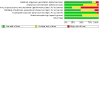

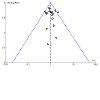
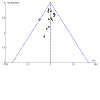
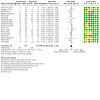

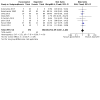
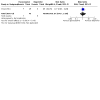

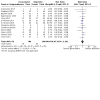

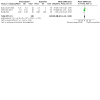

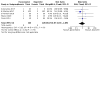


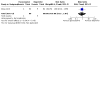

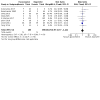
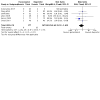
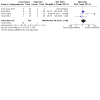
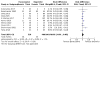
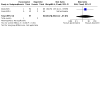


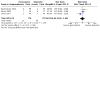
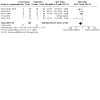
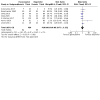

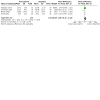
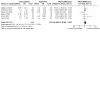


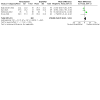

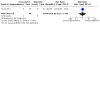

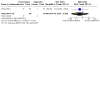
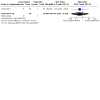


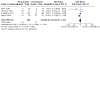



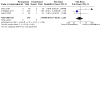





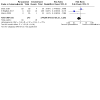



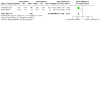

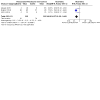

































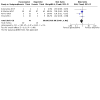


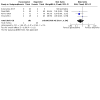
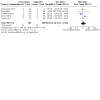
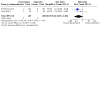
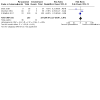







Update of
-
Paracetamol (acetaminophen) for patent ductus arteriosus in preterm or low birth weight infants.Cochrane Database Syst Rev. 2020 Jan 27;1(1):CD010061. doi: 10.1002/14651858.CD010061.pub4. Cochrane Database Syst Rev. 2020. Update in: Cochrane Database Syst Rev. 2022 Dec 15;12:CD010061. doi: 10.1002/14651858.CD010061.pub5. PMID: 31985831 Free PMC article. Updated.
References
References to studies included in this review
Al‐Lawama 2017 {published data only}
Asadpour 2018 {published data only}
-
- Asadpour N, Harandi PS, Hamidi M, Malek Ahmadi MR, Malekpour-Tehrani A. Comparison of the effect of oral acetaminophen and ibuprofen on patent ductus arteriosus closure in premature infants referred to Hajar hospital in Shahrekord in 2016-2017. Journal of Clinical Neonatology 2018;7(4):224-30. [DOI: 10.4103/jcn.JCN_47_18] - DOI
Asbagh 2015 {published data only}
-
- Asbagh PA, Zarkesh MR, Nili F, Sadat Nayeri FS, Naeem AT. Prophylactic treatment with oral paracetamol for patent ductus arteriosus in preterm infants: a randomized clinical trial. Tehran University Medical Journal 2015;73(2):86-92. [http://tumj.tums.ac.ir/article-1-6603-en.html]
Babaei 2018 {published data only}
-
- Babaei H, Nemati R, Daryoshi H. Closure of patent ductus arteriosus with oral acetaminophen in preterm neonates: a randomized trial. Biomedical Research and Therapy 2018;5(2):2034-44. [DOI: 10.15419/bmrat.v5i02.418] - DOI
Bagheri 2016 {published data only}
Bagheri 2018 {published data only}
-
- Bagheri M, Bahman-Bijari B, Torabi-Nejad M, Niknafs P, Mousavi H, Fatemeh S, et al. Is prophylactic parenteral paracetamol effective to diminish incidence of PDA in preterm neonates? A randomized trial. Iranian Journal of Pediatrics 2018;28(4):e11735. [DOI: 10.5812/ijp.11735] - DOI
Balachander 2020 {published data only}
-
- Balachander B, Mondal N, Bhat V, Adhisivam B, Kumar M, Satheesh S, et al. Comparison of efficacy of oral paracetamol versus ibuprofen for PDA closure in preterms - a prospective randomized clinical trial. Journal of Maternal-fetal & Neonatal Medicine 2020;33(9):1587-92. [DOI: 10.1080/14767058.2018.1525354] [PMID: ] - DOI - PubMed
Dang 2013 {published data only}
Dani 2021 {published data only}
-
- Dani C, Lista G, Bianchi S, Mosca F, Schena F, Ramenghi L, et al. Intravenous paracetamol in comparison with ibuprofen for the treatment of patent ductus arteriosus in preterm infants: a randomized controlled trial. European Journal of Pediatrics 2021;180(3):807-16. [DOI: 10.1007/s00431-020-03780-8] [PMID: ] - DOI - PMC - PubMed
Dash 2015 {published data only}
-
- Kabra NS, Dash SK. Comparison of enteral paracetamol and intravenous indomethacin in closure of patent ductus arteriosus (PDA) in preterm newborns: a randomized controlled trial. In: Pediatric Academic Societies Annual Meeting; 2014 July 17-18; Vienna, Austria. 2014.
Davidson 2021 {published data only}
El‐Farrash 2019 {published data only}
-
- El-Farrash RA, El Shimy MS, El-Sakka AS, Ahmed MG, Abdel-Moez DG. Efficacy and safety of oral paracetamol versus oral ibuprofen for closure of patent ductus arteriosus in preterm infants: a randomized controlled trial. Journal of Maternal-fetal & Neonatal Medicine 2019;32(21):3647-54. [DOI: 10.1080/14767058.2018.1470235] [PMID: ] - DOI - PubMed
El Mashad 2017 {published data only}
-
- El-Mashad AE, El-Mahdy H, El Amrousy DE, Elgendy M. Comparative study of the efficacy and safety of paracetamol, ibuprofen, and indomethacin in closure of patent ductus arteriosus in preterm neonates. European Journal of Pediatrics 2017;176(2):233-40. [DOI: 10.1007/s00431-016-2830-7] [PMID: ] - DOI - PubMed
Ghaderian 2019a {published data only}
Ghaderian 2019b {published data only}
Härkin 2016 {published data only}
Hochwald 2018 {published data only}
-
- Hochwald O, Mainzer G, Borenstein-Levin L, Jubran H, Dinur G, Zucker M, et al. Adding paracetamol to ibuprofen for the treatment of patent ductus arteriosus in preterm infants: a double-blind, randomized, placebo-controlled pilot study. American Journal of Perinatology 2018;35(13):1319-25. [DOI: 10.1055/s-0038-1653946] [PMID: ] - DOI - PubMed
Jafari 2019 {published data only}
-
- Jafari N, Mahdian Jouibari R, Ebadi A, Kamali K, Abdolahzadeh S, Hosseini M. Comparison between the safety and efficacy of iv paracetamol (acetaminophen) and iv ibuprofen in treating premature neonates with patent ductus arteriosus (PDA). Journal of Iranian Medical Council 2019;2(4):66-73. [http://www.jimc.ir/article_96268_032a52ab47502ad6c9ff75d3c6e5b3eb.pdf]
Kluckow 2019 {published data only}
Kumar 2020 {published data only}
Meena 2020 {published data only}
-
- Meena V, Meena DS, Rathore PS, Chaudhary S, Soni JP. Comparison of the efficacy and safety of indomethacin, ibuprofen, and paracetamol in the closure of patent ductus arteriosus in preterm neonates - a randomized controlled trial. Annals of Pediatric Cardiology 2020;13(2):130-5. [DOI: 10.4103/apc.APC_115_19] [PMID: ] - DOI - PMC - PubMed
Oboodi 2020 {published data only}
-
- Oboodi R, Najib KS, Amoozgar H, Pourarian S, Moghtaderi M, Mehdizadegan N, et al. Positive tendency toward synchronous use of acetaminophen and ibuprofen in treating patients with patent ductus arteriosus. Türk Kardiyoloji Derneği Arşivi 2020;48(6):605-12. [DOI: 10.5543/tkda.2020.03902] [PMID: ] - DOI - PubMed
Oncel 2014 {published data only}
-
- Oncel MY, Yurttutan S, Erdeve O, Uras N, Altug N, Oguz SS, et al. Oral paracetamol versus oral ibuprofen in the management of patent ductus arteriosus in preterm infants: a randomized controlled trial. Journal of Pediatrics 2014;164(3):510-4.e1. [DOI: 10.1016/j.jpeds.2013.11.008] [PMID: ] - DOI - PubMed
Schindler 2021 {published data only}
-
- Schindler T, Smyth J, Bolisetty S, Michalowski J, Mallitt KA, Singla A, et al. Early PARacetamol (EPAR) trial: a randomized controlled trial of early paracetamol to promote closure of the ductus arteriosus in preterm infants. Neonatology 2021;118(3):274-82. [DOI: 10.1159/000515415] [PMID: ] - DOI - PubMed
Shahmirzadi 2021 {published data only}
Tauber 2020 {published data only}
Yang 2016 {published data only}
-
- Yang B, Gao X, Ren Y, Wang Y, Zhang Q. Oral paracetamol vs. oral ibuprofen in the treatment of symptomatic patent ductus arteriosus in premature infants: a randomized controlled trial. Experimental and Therapeutic Medicine 2016;12(4):2531-6. [DOI: 10.3892/etm.2016.3676] [PMID: ] - DOI - PMC - PubMed
References to studies excluded from this review
Cakir 2021 {published data only}
Höck 2020 {published data only}
-
- Höck M, Brunner B, Rier V, Thöni S, Trawöger R, Geiger R, et al. Prophylactic low-dose paracetamol administration associated with lowered rate of patent ductus arteriosus in preterm infants - impact on outcome and pain perception. Pediatrics and Neonatology 2020;61(1):84-91. [DOI: 10.1016/j.pedneo.2019.06.011] [PMID: ] - DOI - PubMed
King 2020 {published data only}
Shah 2021 {published data only}
-
- Shah SD, Makker K, Nandula P, Smotherman C, Kropf A, Hudak ML. Effectiveness of dual medication therapy (oral acetaminophen and oral ibuprofen) for the management of patent ductus arteriosus in extremely premature infants: a feasibility trial. American Journal of Perinatology 2021 Jan 17 [Epub ahead of print]. [DOI: 10.1055/s-0040-1722329] [PMID: ] - DOI - PubMed
References to ongoing studies
ACTRN12613000289718 {published data only}
-
- ACTRN12613000289718. Paracetamol for patent ductus arteriosus treatment: comparison between oral and intravenous administration. anzctr.org.au/Trial/Registration/TrialReview.aspx?id=363736&isReview... (first received 8 March 2013).
ChiCTR‐TRC‐13003912 {published data only}
-
- ChiCTR-TRC-13003912. Comparison of oral paracetamol versus ibuprofen in premature infants < 1500g with patent ductus arteriosus: a randomized controlled trial. www.chictr.org.cn/hvshowproject.aspx?id=8209 (first received 7 December 2013).
CTRI/2017/10/009989 {published data only}
-
- CTRI/2017/10/009989. Paracetamol versus ibuprofen for closure of patent ductus arteriosus [Efficacy and safety of oral paracetamol versus oral ibuprofen in management of patent ductus arteriosus in preterm neonates less than or equal to 34 Weeks or less than or equal to 1800 gms: a randomized control trial - BAP trial]. apps.who.int/trialsearch/Trial2.aspx?TrialID=CTRI/2017/10/009989 (first received 10 October 2017).
CTRI/2017/10/010012 {published data only}
-
- CTRI/2017/10/010012. A clinical trial comparing low dose versus standard dose of intravenous paracetamol for PDA closure in very premature babies [Randomized controlled trial of two different doses of intravenous paracetamol for PDA closure in preterm infants less than 30 weeks]. www.ctri.nic.in/Clinicaltrials/pdf_generate.php?trialid=20401&EncHid... (first received 05 October 2017).
CTRI/2018/02/011942 {published data only}
-
- CTRI/2018/02/011942. To study the efficacy and safety of oral paracetamol versus oral ibuprofen in the management of patent ductus arteriosus in preterm infants: a randomised controlled trial [Paracetamol versus ibuprofen in the management of patent ductus arteriosus (congenital heart disease) in preterm infants]. www.who.int/trialsearch/Trial2.aspx?TrialID=CTRI/2018/02/011942 (first received 19 February 2018).
EUCTR2015‐003177‐14‐ES {published data only}
-
- EUCTR2015-003177-14-ES. Paracetamol versus ibuprofen in preterm infants with a hemodynamically significant patent ductus arteriosus: a randomized clinical trial. apps.who.int/trialsearch/Trial2.aspx?TrialID=EUCTR2015-003177-14-ES (first received 20 April 2016).
EUCTR2019‐004297‐26‐FR {published data only}
-
- EUCTR2019-004297-26-FR. Prophylactic treatment of the ductus arteriosus in preterm infants by acetaminophen - TREOCAPA. www.clinicaltrialsregister.eu/ctr-search/search?query=eudract_number:201... (first received 28 February 2020).
EUCTR2020‐004245‐37‐IE {published data only}
-
- EUCTR2020-004245-37-IE. Randomised placebo-controlled trial of early targeted treatment of patent ductus arteriosus with paracetamol in extremely low birth weight infants (ETAPA). www.clinicaltrialsregister.eu/ctr-search/search?query=eudract_number:202... (first received 30 October 2020).
IRCT20111011007763N2 {published data only}
-
- IRCT20111011007763N2. Clinical trial of the effect of intravenous acetaminophen in patent ductus arteriosus prophylaxis of preterm infants with gestational age less than 32 weeks. en.irct.ir/trial/8223 (first received 3 March 2018).
IRCT20120215009014N321 {published data only}
-
- IRCT20120215009014N321. Effect of intravenous ibuprofen versus intravenous paracetamol on the occlusion of patent ductus arteriosus in preterm infants: a single-blind randomized clinical trial. en.irct.ir/trial/43951 (first received 10 December 2019).
IRCT20130812014333N118 {published data only}
-
- IRCT20130812014333N118. Comparison of the therapeutic and safety effect of oral and rectal acetaminophen for treatment and safety on the closure of ductus arteriosus in preterm neonates under 35 weeks and 6 days gestational old. en.irct.ir/trial/38155 (first received 11 April 2019).
IRCT20171227038102N1 {published data only}
-
- IRCT20171227038102N1. Investigation effect of oral acetaminophen and ibuprofen on patent ductus arteriosus in preterm neonates. www.who.int/trialsearch/Trial2.aspx?TrialID=IRCT20171227038102N1 (first received 3 July 2018).
IRCT20190505043478N1 {published data only}
-
- IRCT20190505043478N1. Comparison of the efficacy of oral acetaminophen and intravenous acetaminophen for closure of patent ductus arteriosus in preterm neonates. www.irct.ir/trial/39364 (first received 10 May 2019).
IRCT20200218046538N1 {published data only}
-
- IRCT20200218046538N1. Effect of prophylactic oral administration of acetaminophen on patent ductus arteriosus (PDA) closure in preterm neonate admitted in NICU section of Ali ibn Abitaleb Hospital in Zahedan in 2019-2020. en.irct.ir/trial/45975 (first received 10 March 2020).
NCT01291654 {published data only}
-
- NCT01291654. Paracetamol and patent ductus arteriosus (PDA) [Paracetamol in the treatment of patent ductus arteriosus in the premature neonate]. Clinicaltrials.gov/show/NCT01291654 (first received 6 February 2011).
NCT02056223 {published data only}
-
- NCT02056223. Paracetamol vs ibuprofen for PDA closure in preterm infants (PARIDA) [Paracetamol versus ibuprofen for patent ductus arteriosus closure in preterm infants. A prospective, randomized, controlled, double blind, multicenter clinical trial]. clinicaltrials.gov/show/NCT02056223 (first received 10 August 2005).
NCT02819414 {published data only}
-
- NCT02819414. Paracetamol treatment of the borderline significant PDA [Time to re-evaluate the kinder gentler approach to patent ductus arteriosus (PDA) in the preterm neonate]. clinicaltrials.gov/show/NCT02819414 (first received 30 June 2016).
NCT03604796 {published data only}
-
- NCT03604796. Alternative acetaminophen treatment of the hemodynamically significant patent ductus arteriosus in preterm neonates who are not candidates for enteral administration: a pilot study. clinicaltrials.gov/show/NCT03604796 (first received 30 July 2018).
NCT03641209 {published data only}
-
- NCT03641209. Extremely low gestational age infants' paracetamol study: a randomized trial. clinicaltrials.gov/show/NCT03641209 (first received 21 August 2018).
NCT03648437 {published data only}
-
- NCT03648437. Paracetamol and ibuprofen/indomethacin in closing patent ductus arteriosus (PAI). clinicaltrials.gov/show/NCT03648437 (first received 27 August 2018).
NCT04037514 {published data only}
-
- García-Robles A, Gimeno Navarro A, Serrano Martín MD, Párraga Quiles MJ, Parra Llorca A, Poveda-Andrés JL, et al. Paracetamol vs. ibuprofen in preterm infants with hemodynamically significant patent ductus arteriosus: a non-inferiority randomized clinical trial protocol. Frontiers in Pediatrics 2020;8:372. [DOI: 10.3389/fped.2020.00372] [PMID: ] - DOI - PMC - PubMed
-
- NCT04037514. Paracetamol versus ibuprofen in premature infants with hemodynamically significant patent ductus arteriosus (IBUPAR). clinicaltrials.gov/ct2/show/NCT04037514 (first received 30 July 2019).
NCT04459117 {published data only}
-
- NCT04459117. Prophylactic treatment of the ductus arteriosus in preterm infants by acetaminophen. clinicaltrials.gov/show/NCT04459117 (first received 7 July 2020).
NCT04986839 {published data only}
-
- NCT04986839. PAIR (Paracetamol and Ibuprofen Research) Study: a randomised controlled trial comparing IV paracetamol with IV ibuprofen in the management of haemodynamically significant patent ductus arteriosus. clinicaltrials.gov/show/NCT04986839 (first registered on 19 July 2021).
TCTR20201104001 {published data only}
-
- TCTR20201104001. Paracetamol administration within the first 72 hours of life in early preterm infants with hemodynamically significant patent ductus arteriosus for prevention of bronchopulmonary dysplasia. www.thaiclinicaltrials.org/show/TCTR20201104001 (first received 30 August 2021).
Additional references
APA 2013
-
- American Psychiatric Association. Diagnostic and Statistical Manual of Mental Disorders. 5th edition. Arlington, VA: American Psychiatric Association, 2013.
Arana 2001
Avella‐Garcia 2016
Bauer 2013
Bauer 2018
Bell 1978
Bornehag 2017
Botting 2000
CADTH 2016
-
- Canadian Agency for Drugs and Technologies in Health (CADTH). Strings attached: CADTH database search filters. Ottawa: CADTH; 2016. Available from: /resources/finding-evidence (accessed prior to 4 August 2022).
Clyman 2000
Cochrane 2021
-
- Cochrane. How CENTRAL is created: identifying RCTs for inclusion in CENTRAL. www.cochranelibrary.com/central/central-creation (accessed prior to 4 August 2022).
Edwards 1990
Ehrenkranz 2005
-
- Ehrenkranz RA, Walsh MC, Vohr BR, Jobe AH, Wright LL, Fanaroff AA, et al, National Institutes of Child Health and Human Development Neonatal Research Network. Validation of the National Institutes of Health consensus definition of bronchopulmonary dysplasia. Pediatrics 2005;116(6):1353-60. [DOI: 10.1542/peds.2005-0249] [PMID: ] - DOI - PubMed
El‐Khuffash 2014
Fowlie 2010
GRADEpro GDT [Computer program]
-
- GRADEpro GDT. Version accessed 21 March 2018. Hamilton (ON): McMaster University (developed by Evidence Prime), 2013. Available at gradepro.org.
Grèen 1989
Hammerman 1995
-
- Hammerman C. Patent ductus arteriosus. Clinical relevance of prostaglandins and prostaglandin inhibitors in PDA pathophysiology and treatment. Clinics in Perinatology 1995;22(2):457-79. [PMID: ] - PubMed
Hammerman 2011
Higgins 2003
Higgins 2011
-
- Higgins JP, Altman DG, Sterne JA, on behalf of the Cochrane Statistical Methods Group and the Cochrane Bias Methods Group. Chapter 8: Assessing risk of bias in included studies. In: Higgins JP, Green S, editor(s). Cochrane Handbook for Systematic Reviews of Interventions Version 5.1.0 (updated March 2011). The Cochrane Collaboration, 2011. Available from handbook.cochrane.org.
Higgins 2020
-
- Higgins JP, Thomas J, Chandler J, Cumpston M, Li T, Page MJ, et al (editors). Cochrane Handbook for Systematic Reviews of Interventions version 6.1 (updated September 2020). Cochrane, 2020. Available from www.training.cochrane.org/handbook.
ICCROP 2005
Jobe 2001
Juujärvi 2019
Juujärvi 2021
Kessel 2014
-
- Kessel I, Waisman D, Lavie-Nevo K, Golzman M, Lorber A, Rotschild A. Paracetamol effectiveness, safety and blood level monitoring during patent ductus arteriosus closure: a case series. Journal of Maternal-fetal & Neonatal Medicine 2014;27(16):1719-21. [DOI: 10.3109/14767058.2013.871630] [PMID: ] - DOI - PubMed
Lee 2000
Lefebvre 2011
-
- Lefebvre C, Manheimer E, Glanville J. Chapter 6: Searching for studies. In: Higgins JP, Green S (editors). Cochrane Handbook for Systematic Reviews of Interventions Version 5.1.0 (updated March 2011). The Cochrane Collaboration, 2011. Available from www.handbook.cochrane.org.
Liebowitz 2019
-
- Liebowitz M, Kaempf J, Erdeve O, Bulbul A, Håkansson S, Lindqvist J, et al. Comparative effectiveness of drugs used to constrict the patent ductus arteriosus: a secondary analysis of the PDA-TOLERATE trial (NCT01958320). Journal of Perinatology 2019;39(5):599-607. [DOI: 10.1038/s41372-019-0347-4] [PMID: ] - DOI - PMC - PubMed
Maisels 2003
Marconi 2019
-
- Marconi E, Bettiol A, Ambrosio G, Perduca V, Vannacci A, Troiani S, et al. Efficacy and safety of pharmacological treatments for patent ductus arteriosus closure: a systematic review and network meta-analysis of clinical trials and observational studies. Pharmacological Research 2019;148:104418. [DOI: 10.1016/j.phrs.2019.104418] [PMID: ] - DOI - PubMed
Mathew 1998
-
- Mathew R. Development of the pulmonary circulation: metabolic aspects. In: Polin RA, Fox WW, editors(s). Fetal and Neonatal Physiology. Vol. 1. Philadelphia (PA): W.B. Saunders, 1998:924-9.
Nadir 2014
Naulty 1978
Nielsen 2022
NLM 2012
-
- US National Library of Medicine. Drug Information Portal. druginfo.nlm.nih.gov/drugportal (accessed 21 March 2018).
Ohlsson 1993
Ohlsson 2020a
Ohlsson 2020b
Ovelman 2020
-
- Ovelman C, Eckert C, Friesen C. Validating Cochrane Neonatal’s standard search databases: is it okay to stop searching Embase? In: Advances in Evidence Synthesis: special issue. Cochrane Database of Systematic Reviews 2020; (9 Suppl 1): [320] www.cochranelibrary.com/cdsr/doi/10.1002/14651858.CD202001/full.
Palmer 2008
Papile 1978
Peterson 1985
-
- Peterson RG. Consequences associated with nonnarcotic analgesics in the fetus and newborn. Federation Proceedings 1985;44(7):2309-13. [PMID: ] - PubMed
Pranata 2020
-
- Pranata R, Yonas E, Vania R, Prakoso R. The efficacy and safety of oral paracetamol versus oral ibuprofen for patent ductus arteriosus closure in preterm neonates - a systematic review and meta-analysis. Indian Heart Journal 2020;72(3):151-9. [DOI: 10.1016/j.ihj.2020.05.012] [PMID: ] - DOI - PMC - PubMed
Review Manager 2020 [Computer program]
-
- Review Manager 5 (RevMan 5). Version 5.4. Copenhagen: The Cochrane Collaboration, 2020.
Roofthooft 2015
-
- Roofthooft DW, Van Beynum IM, De Klerk JC, Van Dijk M, Van den Anker JN, Reiss IK, et al. Limited effects of intravenous paracetamol on patent ductus arteriosus in very low birth weight infants with contraindications for ibuprofen or after ibuprofen failure. European Journal of Pediatrics 2015;174(11):1433-40. [DOI: 10.1007/s00431-015-2541-5] [PMID: ] - DOI - PMC - PubMed
Sakhalkar 1992
-
- Sakhalkar VS, Merchant RH. Therapy of symptomatic patent ductus arteriosus in preterms with mefenemic acid and indomethacin. Indian Pediatrics 1992;29(3):313-8. [PMID: ] - PubMed
Schünemann 2013
-
- Schünemann H, Brożek J, Guyatt G, Oxman A, editor(s). Handbook for grading the quality of evidence and the strength of recommendations using the GRADE approach (updated October 2013). GRADE Working Group, 2013. Available from gdt.guidelinedevelopment.org/app/handbook/handbook.html.
Seyberth 1983
-
- Seyberth HW, Rascher W, Hackenthal R, Wille L. Effect of prolonged indomethacin therapy on renal function and selected vasoactive hormones in very-low-birth-weight infants with symptomatic patent ductus arteriosus. Journal of Pediatrics 1993;103(6):979-84. [DOI: 10.1016/s0022-3476(83)80736-7] [PMID: ] - DOI - PubMed
Simbi 2002
Sinah 2013
Sundaram 2011
Sung 2016
Terrin 2014
Van Loon 2011
-
- Van Loon RL, Roofthooft MT, Hillege HL, ten Harkel AD, Van Osch-Gevers M, Delhaas T, et al. Pediatric pulmonary hypertension in the Netherlands. Epidemiology and characterization during the period 1991 to 2005. Circulation 2011;124(16):1755-64. [DOI: 10.1161/CIRCULATIONAHA.110.969584] [PMID: ] - DOI - PubMed
Viberg 2014
-
- Viberg H, Eriksson P, Gordh T, Fredriksson A. Paracetamol (acetaminophen) administration during neonatal brain development affects cognitive function and alters its analgesic and anxiolytic response in adult male mice. Toxicological Sciences 2014;138(1):139-47. [DOI: 10.1093/toxsci/kft329] [PMID: ] - DOI - PubMed
Walls 2007
Weir 1999
Wolf 1989
Xiao 2020
Ystrom 2017
Yurttutan 2013
References to other published versions of this review
Ohlsson 2012
Ohlsson 2015b
Ohlsson 2018
Publication types
MeSH terms
Substances
Associated data
LinkOut - more resources
Full Text Sources
Medical

